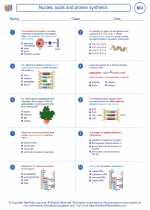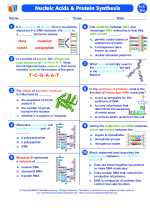Chromatography
Chromatography is a technique used to separate and analyze the components of a mixture based on their different affinities for a stationary phase and a mobile phase. It is widely used in various scientific fields including biology, chemistry, and biochemistry.
Principles of Chromatography
The basic principle of chromatography involves the distribution of components between two phases: the stationary phase and the mobile phase. The stationary phase can be a solid or a liquid supported on a solid, while the mobile phase is typically a liquid or a gas.
Types of Chromatography
There are different types of chromatography, including:
- Thin Layer Chromatography (TLC): In TLC, a thin layer of adsorbent material is coated onto a flat, inert support such as glass or plastic. It is often used in the analysis of plant pigments and amino acids.
- Column Chromatography: In this technique, the stationary phase is packed into a column and the mobile phase is allowed to flow through the column, separating the components based on their affinities for the stationary phase.
- Gas Chromatography (GC): GC is used to separate and analyze volatile compounds. The stationary phase is a liquid supported on an inert solid, and the mobile phase is an inert gas.
- High-Performance Liquid Chromatography (HPLC): HPLC is a highly efficient form of liquid chromatography that is used to separate and quantify components of a mixture. It is widely used in pharmaceutical and biochemical analyses.
Applications of Chromatography
Chromatography has numerous applications in various scientific and industrial fields, including:
- Drug development and quality control
- Environmental analysis
- Forensic science
- Protein purification
- Food and beverage industry
Study Guide for Chromatography
Here are some key points to remember when studying chromatography:
- Understand the basic principles of chromatography, including the role of the stationary phase and the mobile phase.
- Be familiar with the different types of chromatography and their specific applications.
- Learn about the factors that influence the separation of components in chromatography, such as the polarity of the stationary phase and the mobile phase.
- Practice interpreting chromatograms and understanding how to analyze and identify the separated components.
- Explore the various real-world applications of chromatography in different scientific and industrial settings.
By understanding the principles and applications of chromatography, you will be able to appreciate its significance in scientific research and various industries.
.◂Biology Worksheets and Study Guides High School. Nucleic acids and protein synthesis

 Worksheet/Answer key
Worksheet/Answer key
 Worksheet/Answer key
Worksheet/Answer key
 Worksheet/Answer key
Worksheet/Answer key
 Vocabulary/Answer key
Vocabulary/Answer key
 Vocabulary/Answer key
Vocabulary/Answer key
 Vocabulary/Answer key
Vocabulary/Answer key
